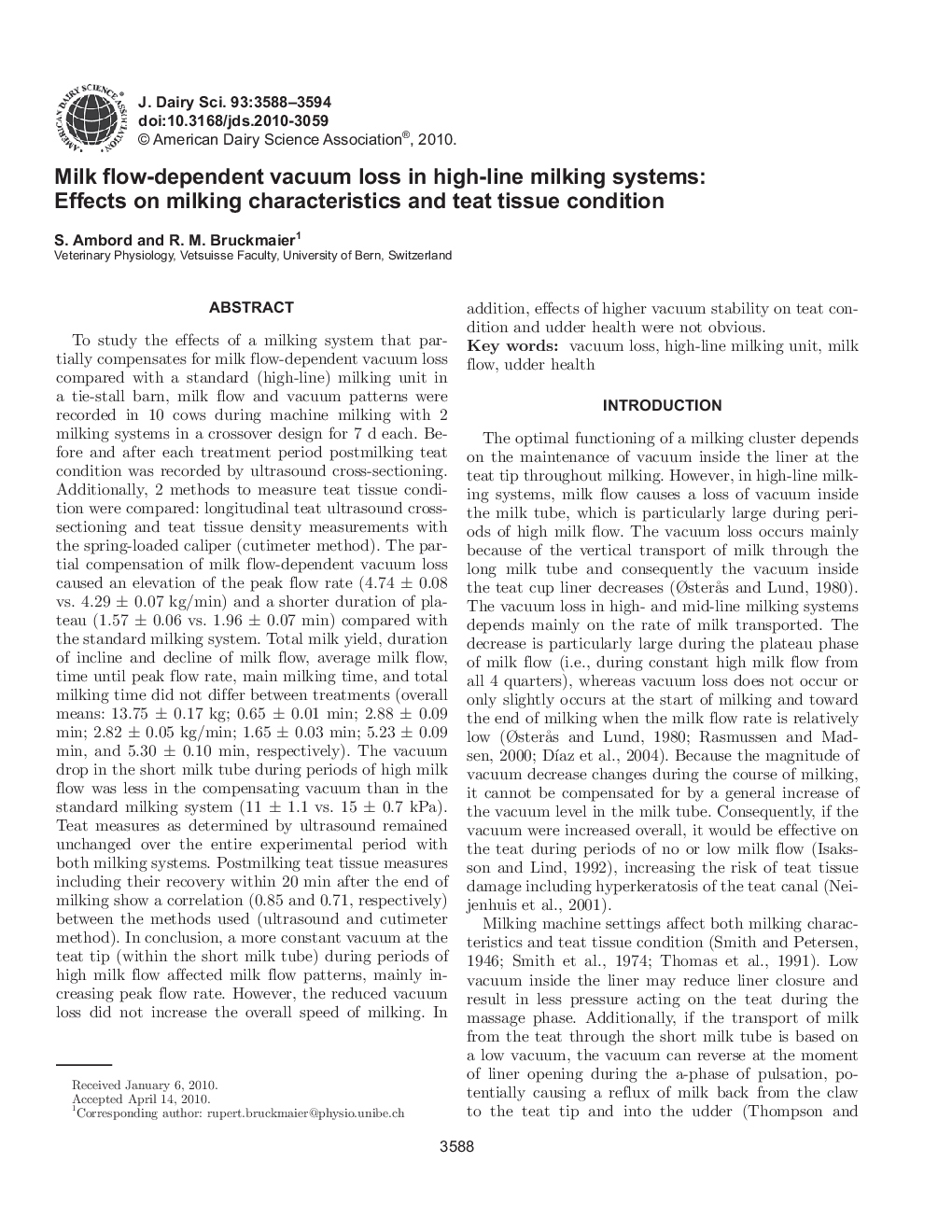| کد مقاله | کد نشریه | سال انتشار | مقاله انگلیسی | نسخه تمام متن |
|---|---|---|---|---|
| 10980886 | 1108073 | 2010 | 7 صفحه PDF | دانلود رایگان |
عنوان انگلیسی مقاله ISI
Milk flow-dependent vacuum loss in high-line milking systems: Effects on milking characteristics and teat tissue condition
دانلود مقاله + سفارش ترجمه
دانلود مقاله ISI انگلیسی
رایگان برای ایرانیان
موضوعات مرتبط
علوم زیستی و بیوفناوری
علوم کشاورزی و بیولوژیک
علوم دامی و جانورشناسی
پیش نمایش صفحه اول مقاله

چکیده انگلیسی
To study the effects of a milking system that partially compensates for milk flow-dependent vacuum loss compared with a standard (high-line) milking unit in a tie-stall barn, milk flow and vacuum patterns were recorded in 10 cows during machine milking with 2 milking systems in a crossover design for 7 d each. Before and after each treatment period postmilking teat condition was recorded by ultrasound cross-sectioning. Additionally, 2 methods to measure teat tissue condition were compared: longitudinal teat ultrasound cross-sectioning and teat tissue density measurements with the spring-loaded caliper (cutimeter method). The partial compensation of milk flow-dependent vacuum loss caused an elevation of the peak flow rate (4.74 ± 0.08 vs. 4.29 ± 0.07 kg/min) and a shorter duration of plateau (1.57 ± 0.06 vs. 1.96 ± 0.07 min) compared with the standard milking system. Total milk yield, duration of incline and decline of milk flow, average milk flow, time until peak flow rate, main milking time, and total milking time did not differ between treatments (overall means: 13.75 ± 0.17 kg; 0.65 ± 0.01 min; 2.88 ± 0.09 min; 2.82 ± 0.05 kg/min; 1.65 ± 0.03 min; 5.23 ± 0.09 min, and 5.30 ± 0.10 min, respectively). The vacuum drop in the short milk tube during periods of high milk flow was less in the compensating vacuum than in the standard milking system (11 ± 1.1 vs. 15 ± 0.7 kPa). Teat measures as determined by ultrasound remained unchanged over the entire experimental period with both milking systems. Postmilking teat tissue measures including their recovery within 20 min after the end of milking show a correlation (0.85 and 0.71, respectively) between the methods used (ultrasound and cutimeter method). In conclusion, a more constant vacuum at the teat tip (within the short milk tube) during periods of high milk flow affected milk flow patterns, mainly increasing peak flow rate. However, the reduced vacuum loss did not increase the overall speed of milking. In addition, effects of higher vacuum stability on teat condition and udder health were not obvious.
ناشر
Database: Elsevier - ScienceDirect (ساینس دایرکت)
Journal: Journal of Dairy Science - Volume 93, Issue 8, August 2010, Pages 3588-3594
Journal: Journal of Dairy Science - Volume 93, Issue 8, August 2010, Pages 3588-3594
نویسندگان
S. Ambord, R.M. Bruckmaier,